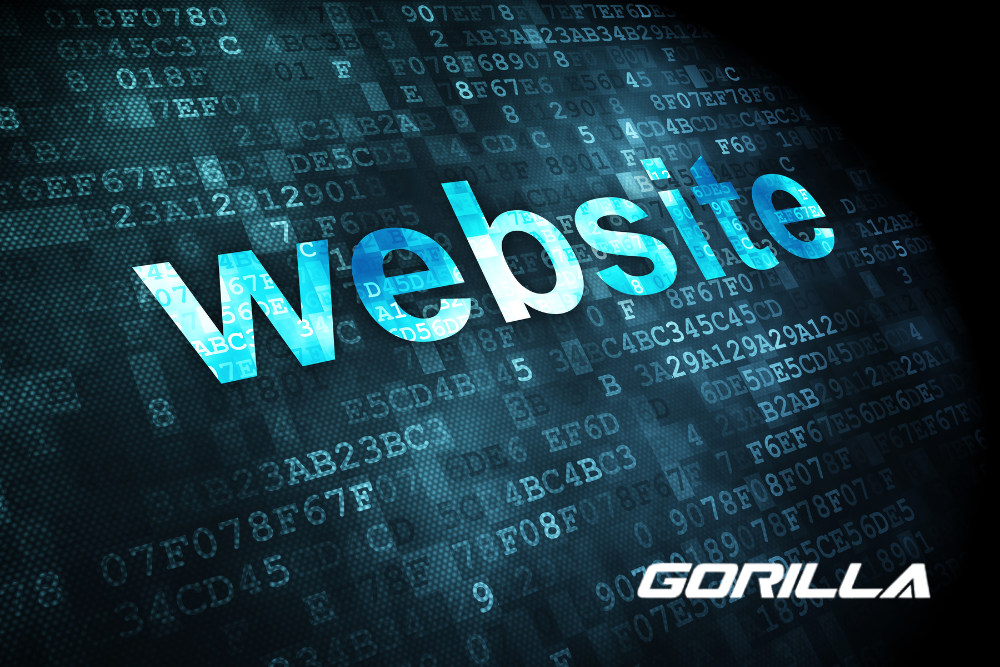
As the digital landscape continues to evolve, having a well-designed website has become an essential aspect for businesses of all sizes. In today’s fast-paced world, a strong online presence is crucial for reaching potential customers and staying competitive.
In 2024, we can expect to see even more technological advancements that will impact how businesses design their websites. With this in mind, businesses need to understand the key elements of website design and how to leverage them to create a successful online presence.
In this guide, we will explore the latest trends and essentials for website design that businesses should consider in 2024. From responsive design and user experience to branding and SEO optimization, we will cover everything you need to know to create a visually appealing and highly functional website that attracts and retains customers. Let’s dive in!
Why is Website Design Important for Businesses?
In today’s digital age, having a well-designed website has become crucial for businesses to succeed. It serves as the face of your brand and is often the first point of contact for potential customers. A poorly designed website can create a negative impression and drive away potential leads.
Moreover, with more people relying on their smartphones and other mobile devices, having a responsive website design that adapts to different screen sizes has become essential. This ensures that your website is accessible and user-friendly across all devices.
A well-designed website also plays a significant role in establishing credibility and trust with your target audience. It reflects the professionalism and legitimacy of your business, which can impact consumers’ purchasing decisions.
Additionally, a user-friendly and visually appealing website can improve the overall user experience and increase customer satisfaction. This can lead to higher conversion rates and repeat business.
Benefits of a Professional Website Design
Investing in professional website design can bring numerous benefits to businesses. A well-designed website helps create a positive and consistent brand image, which is crucial for gaining customer trust and loyalty. Consistent branding across all marketing channels, including your website, can also help improve brand recognition and recall.
A professional website with a user-friendly interface enhances the overall user experience. It makes it easier for customers to navigate and find what they are looking for quickly, which can lead to increased engagement and conversions on your site.
Moreover, a professionally designed website can also help improve search engine optimization (SEO). By following SEO best practices such as using relevant keywords and optimizing page loading speed, you can increase your website’s visibility on search engine result pages and attract more organic traffic.
A well-designed website can also save businesses time and money in the long run. With a user-friendly interface, customers are less likely to encounter issues or errors while using your site, reducing the need for customer support. Additionally, regularly updating and maintaining a professional website can help prevent costly technical issues in the future.
Key Elements of a Successful Website Design
When designing a website, there are certain key elements that businesses should consider to ensure success. One of the most important elements is navigation. A well-organized and user-friendly navigation menu allows customers to find the information they need on your site easily.
Another essential element is visual hierarchy, which refers to the arrangement and prioritization of content on a webpage. By using different design elements such as font size, color, and placement, you can guide users’ attention towards important information and improve their overall browsing experience.
A responsive design is also crucial for a successful website in 2024. With more people accessing websites through mobile devices, having a site that adapts to different screen sizes is necessary. This not only improves the user experience but also helps with SEO.
Incorporating multimedia elements such as images, videos, and animations can also make a website more visually appealing and engaging for users. However, using these elements thoughtfully and strategically is important to avoid overwhelming or distracting visitors.
Lastly, a crucial element of website design is ensuring accessibility for all users, including those with disabilities. By following web accessibility guidelines, businesses can ensure that their website is usable by everyone and comply with legal requirements in some countries.
A Complete Guide to Website Design in 2024
Now that we have covered the importance and benefits of website design for businesses, let’s delve into a complete guide on how to design a successful website in 2024. Here are the key steps to follow:
Understand Your Target Audience
Understanding your target audience is crucial in designing a website that effectively communicates with and resonates with them. To do this, it is important to conduct thorough market research and gather insights into your target demographic’s preferences, behaviors, and needs.
Some key factors to consider when understanding your target audience include age, gender, location, interests, and online behavior. This information can help guide the design elements you incorporate on your website, such as color schemes or language used.
Choosing the Right Website Design Platform
Choosing the right platform for your website is essential for creating a successful design. Various options are available, each with its own set of features and functionalities. Before deciding on a platform, it is important to consider your business’s and website’s specific needs, as well as your budget.
For example, if you have limited technical knowledge, platforms like WordPress or Wix may be more suitable for their user-friendly interface and drag-and-drop design options. On the other hand, if you require advanced customization and functionality, a platform like Magento or Shopify may be better suited.
Ultimately, the key is choosing a platform that aligns with your business goals and allows you to easily create a professional and functional website. It is also important to regularly review and update your chosen platform to stay current with new features and updates.
Writing Clear and Concise Website Copy for Improved Readability
Clear and concise website copy is essential for effectively communicating your brand’s message and enticing visitors to explore further. When writing website copy, it is important to keep it simple, direct, and easy to understand.
Some tips for writing clear and concise website copy include:
- Use short sentences and paragraphs
- Avoid jargon or technical terms that may not be familiar to all users
- Utilize headings and subheadings to break up content and make it more scannable
- Include relevant keywords for SEO purposes, but avoid keyword stuffing
- Use active voice instead of passive voice for a more engaging tone
By implementing these practices, businesses can improve the readability of their website and make it more user-friendly for visitors. Additionally, regularly reviewing and updating website copy can help keep it current and relevant to the needs of your target audience.
Incorporating Visual Elements Such as Images, Videos, and Graphics
Incorporating visual elements on a website is crucial for creating an engaging and visually appealing user experience. These elements break up text and help communicate information more dynamically.
When incorporating visual elements on a website, it is important to consider the purpose of each element. For example, using high-quality images or videos can effectively showcase products or services, while using graphics or infographics can simplify complex information.
It is also important to ensure that all visual elements are optimized for web use, with appropriate file sizes and formats. This can help improve website loading speed, a crucial factor in user experience.
Furthermore, businesses should regularly review and update their visual elements to ensure they align with their branding and remain relevant to their target audience. Overall, incorporating well-designed visual elements can greatly enhance the overall design of a website and make it more appealing to visitors.
Creating a User-Friendly Navigation Menu
A user-friendly navigation menu is essential for helping visitors easily find what they are looking for on a website. When designing a navigation menu, it is important to keep it simple, intuitive, and organized.
Some best practices for creating a user-friendly navigation menu include:
- Limit the number of menu items to avoid overwhelming visitors
- Use clear and concise labels for each menu item
- Group related pages or categories together
- Include a search bar for quicker access to specific content
Additionally, businesses should consider implementing responsive design for their navigation menu, ensuring it is easily accessible and functional on all devices.
Regularly testing and reviewing the navigation menu can also help identify any issues or areas for improvement. By continuously improving the usability of the navigation menu, businesses can enhance the overall user experience on their website.
Designing for Mobile-First User Experience (Mobile Responsiveness)
With the increasing use of mobile devices for internet browsing, businesses must design their websites with a mobile-first approach. This means prioritizing the user experience on mobile devices and ensuring the website is responsive and functional on all screen sizes.
Also, businesses should consider the differences between mobile and desktop users and design their websites accordingly. For example, using larger font sizes and simpler navigation menus can improve usability for mobile users.
In addition, regularly testing and optimizing for different devices and screen sizes is important to ensure a seamless experience for all visitors. This includes checking load times, image sizes, and overall functionality.
Implementing SEO Best Practices for Improved Search Engine Visibility
In today’s digital age, having a website is not enough; businesses must also ensure it is visible to potential customers through search engines. This is where implementing SEO best practices becomes crucial.
Plus, businesses should conduct keyword research to identify relevant and high-performing keywords to incorporate into their website content. This can help improve search engine rankings and increase organic traffic to the site.
Other important SEO factors include optimizing meta titles and descriptions, using alt tags for images, and creating quality backlinks from reputable websites.
Regularly reviewing and updating SEO strategies is also essential as algorithms and search trends constantly evolve. By consistently implementing effective SEO practices, businesses can improve their visibility in search results and attract more potential customers to their website.
Regularly Updating and Maintaining the Website to Ensure Functionality and Relevance
A website is not a one-time project; it requires ongoing maintenance to ensure it remains functional and relevant to users. This includes regularly reviewing and updating content, fixing any broken links or errors, and ensuring the website design is up-to-date.
Updating website content can also help improve search engine rankings and keep visitors engaged with fresh and relevant information. Additionally, maintaining a user-friendly design and navigation menu is important for creating a positive user experience.
Regularly checking website performance data, such as load times and bounce rates, can also identify any issues that need to be addressed. It is also important to ensure that the website is secure by regularly monitoring for security threats and implementing necessary updates or fixes.
Website Security Considerations and SSL Certificates
Website security is a paramount concern for businesses and users alike, as it protects sensitive information from potential threats. Implementing SSL (Secure Socket Layer) certificates is one of the most effective ways to secure your website.
An SSL certificate encrypts data exchanged between the user’s browser and your server, ensuring that private information such as credit card details and personal data remains safe.
Additionally, having an SSL certificate boosts your website’s credibility and can improve search engine rankings, as search engines favour secure sites. Regularly monitoring your site for vulnerabilities and updating software and security protocols are essential to maintaining a secure online presence.
Maintaining and Updating Your Website Design and Ongoing Website Maintenance
Ongoing website maintenance is critical to ensuring your site remains user-friendly and visually appealing. This involves regularly reviewing the design and functionality of your website and making necessary updates.
Keeping the design modern and consistent with current web trends can enhance users’ engagement and decrease bounce rates. Furthermore, it’s important to check for outdated plugins, themes, and software, as these can pose security risks and affect performance.
Incorporating user feedback into updates can also help tailor the website to meet visitors’ needs. Consistent testing across various devices and browsers ensures your site is fully functional for all users, thereby enhancing the overall user experience.
So these are some important factors to remember when maintaining and updating your website design. By regularly reviewing and implementing necessary changes, businesses can ensure their website stays relevant, secure, and user-friendly for visitors.
Importance of High-Quality Website Images and Visuals
In today’s digital world, websites rely heavily on visual elements to attract and engage visitors. High-quality images and visuals can significantly impact the overall user experience and influence a visitor’s perception of a business.
Using relevant and visually appealing images can also help convey information more effectively and make a website more memorable for users. In fact, studies have shown that humans process visual information faster than text, making it a powerful tool for communication.
Furthermore, incorporating high-quality images can improve the design aesthetics of a website, making it more visually attractive. This can lead to increased time spent on the site and potentially higher conversions.
However, it is important to note that using too many images or large file sizes can negatively impact website performance, resulting in slower load times. Therefore, optimizing images for web use by compressing them without compromising quality is essential.
Moreover, incorporating alternative text (alt tags) for images can improve accessibility for visually impaired visitors and boost search engine optimization. By prioritizing high-quality visuals and regularly updating them, businesses can enhance their website’s overall appearance and user experience.
How Much Budget Should You Allocate to Website Maintenance?
Allocating a budget for website maintenance is crucial for businesses to ensure their websites remain functional and up-to-date. However, there is no set formula or percentage that applies to all businesses, as each company’s needs and goals will vary.
Factors such as the size and complexity of the website, frequency of updates and changes, and level of security needed can all impact the cost of maintenance.
It is recommended that you allocate 10-15% of your total web development budget to ongoing maintenance. This can include updating content, fixing bugs or errors, monitoring site performance, and implementing necessary security measures.
Additionally, it is important to consider the potential costs of not maintaining a website. A poorly maintained site can result in lost business opportunities, decreased search engine rankings, and even security breaches that could be costly to recover from.
Regularly reviewing your website’s performance and setting aside a budget for maintenance is a proactive approach to ensuring your online presence remains effective and secure. By prioritizing website maintenance, businesses can avoid any major issues and continuously improve their online presence.
Is Professional Website Maintenance Worth the Investment?
Many businesses may question the need to invest in professional website maintenance, especially if they have a small budget. However, it is important to understand that website maintenance is an ongoing process that requires expertise and dedication.
Professional website maintenance services can provide businesses with peace of mind knowing their site is being regularly monitored and updated by experienced professionals. This saves business owners valuable time and ensures the site remains secure and performs at its best.
Moreover, outsourcing website maintenance allows businesses to tap into specialized skills and knowledge that may not be available in-house. Professional web developers stay up-to-date with industry trends, security protocols, and SEO guidelines to ensure the website is always in top shape.
Investing in professional website maintenance can also be cost-effective in the long run. Regular updates and fixes can prevent major issues from arising, saving businesses from potentially costly repairs or redesigns.
Does Website Maintenance Impact SEO?
In short, yes, website maintenance can significantly impact search engine optimization (SEO). Regular updates and fixes can improve a website’s overall performance, leading to better rankings on search engines.
Search engines favor regularly maintained and updated websites as they show a commitment to providing users with relevant and up-to-date information.
Website maintenance can also affect technical SEO factors such as site speed, mobile responsiveness, and crawlability. Slow load times or broken links can negatively impact user experience and lower rankings.
Moreover, updating keyword-rich content and meta tags can help boost organic traffic by targeting relevant keywords that users may be searching for.
On the other hand, neglecting website maintenance can lead to broken links, outdated content, and security vulnerabilities which can all negatively impact SEO. This may result in lower rankings and decreased visibility on search engines.
Therefore, by prioritizing regular website maintenance, businesses can ensure a better user experience and improve their overall SEO efforts. This can ultimately drive more traffic to the site and potentially increase conversions.
Tips for Effective Website Maintenance
Here are some tips for effectively maintaining a website:
- Regularly update content: Fresh and relevant content is key to keeping visitors engaged and improving SEO. Also, regularly reviewing and updating old content can improve its performance.
- Monitor site performance: Monitor website metrics such as page load times, bounce rates, and conversion rates to identify any issues that may need attention.
- Perform security checks: Regularly checking for potential security vulnerabilities and implementing necessary measures can protect the site from cyber threats.
- Fix broken links: Broken links negatively impact user experience and hurt SEO efforts. Regularly check for broken links and fix them promptly.
- Optimize images: Compressing images without compromising quality can improve site speed and overall performance.
- Stay updated with industry trends: Keeping up-to-date with the latest trends and updates in web development, design, and SEO can ensure the site remains relevant and competitive.
- Perform regular backups: It is important to regularly back up the website’s data to avoid any loss of information in case of a security breach or technical issue.
By following these tips, businesses can effectively maintain their websites and ensure they continue to deliver a positive user experience while supporting their overall goals and objectives.
Transform Your Business with Cutting-Edge Website Design in 2024
Elevate your digital presence with Gorilla, Phoenix’s premier website design and development agency. We specialize in crafting visually stunning and highly functional websites tailored to meet the unique needs of your business.
Our expert team works diligently to ensure that each site captures the essence of your brand and employs best practices to convert visitors into loyal customers. We understand that a website is often the first interaction potential clients have with your business, so we prioritize user experience and engaging design. Ready to stand out in the competitive digital landscape of 2024?
Call us at 855-518-3084 today or schedule a discovery call to learn how our tailored website solutions can propel your business forward. Boost your online success with Gorilla’s expert design and strategic planning.
Related Content: Top Law Firm Website Design Trends in 2024
Top FAQs About Web Designs
Web design basics for any small business website include having a clean, user-friendly layout, fast load times, and mobile responsiveness to ensure a good experience for site visitors.
Responsive web design is crucial for a business website as it ensures it looks and functions well on all devices, enhancing the user experience and potentially increasing engagement and conversions.
When choosing a web host for your new website, consider factors like uptime reliability, customer support, scalability options, and whether they can handle the anticipated traffic to your business website.
Web designers can improve website pages by ensuring they are visually appealing, easy to navigate, and load quickly. Additionally, including clear calls-to-action can guide site visitors to engage more deeply with your online business.
Web hosting plays a critical role in the performance of business websites. It affects the speed, uptime, and security of your site, all of which are important for maintaining a positive user experience and trust.
Integrating social media pages into your website can be done by adding social media buttons that link to your profiles, embedding social feeds directly on your site, or using blog posts to promote social content.
The first steps in web designing a new website for an online business include planning the site structure, selecting a suitable web host, designing the layout that reflects your brand, and creating content that aligns with the needs of your audience.













